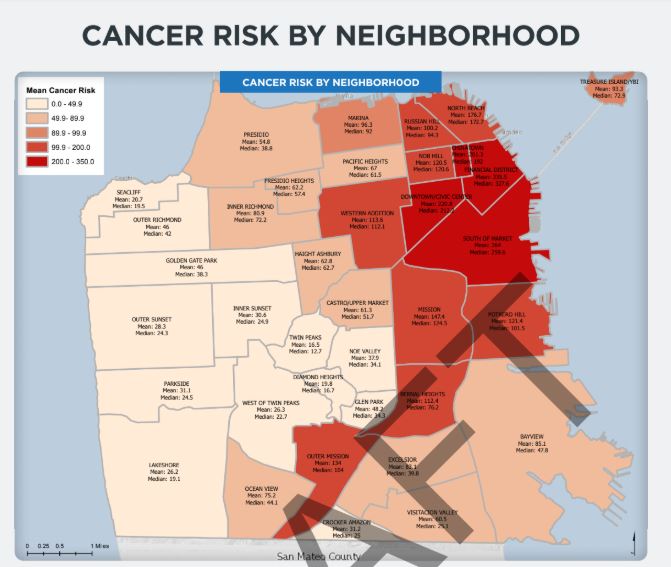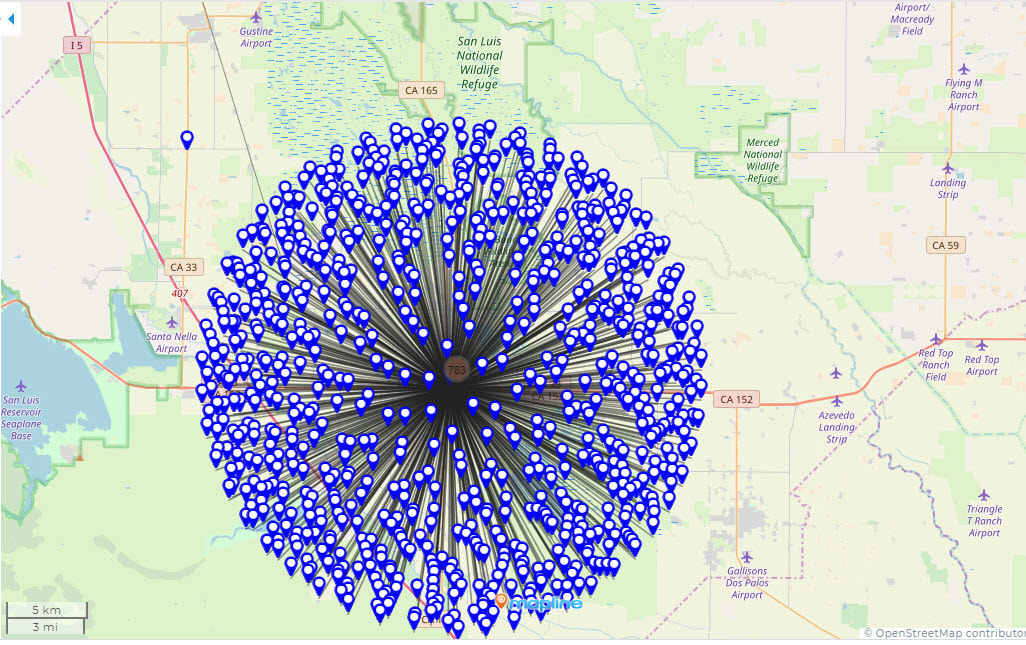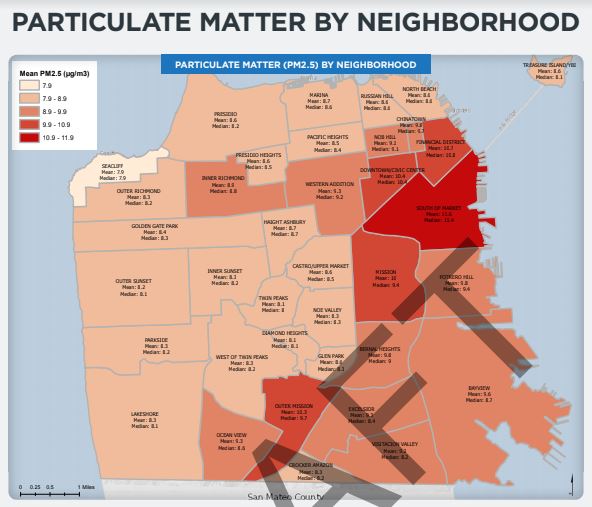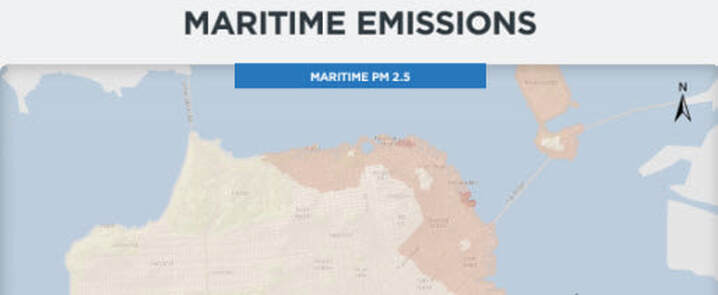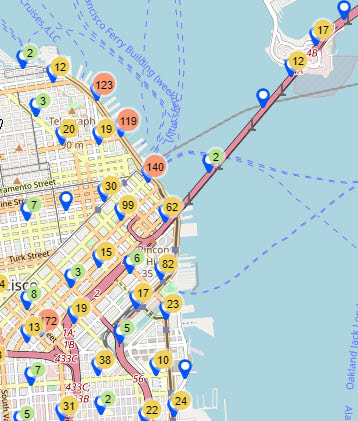Google Street View Data
Street Air is pleased to announce that Google has given Street Air access to is extensive air pollution database. This data is collected on their Street View cars and then stored for later evaluation. Street Air is mapping the data and evaluating NOX, PM 1 and PM 2.5 data hot spots for futher study. Street Air’s goal is to determine how the hot spot is being created, if there are any possible mitigations, and the extent of the geographic boundaries of the hot spot.
This is map is made from Google's Street View data. The data at this location represents 700 of the top 1000 PM 2.5 readings in the Street View database. Notice that the points located in a small geographic area in Los Bano's. We have done some preliminary that indicates that this PM 2.5 particulate is coming from a nearby CalTran's facility. Street Air is organizing a field trip to take PM 2.5 measurements in the area to do further research on this issue.
San Francisco Department of Public Health DRAFT 2020 Neighborhood Data
